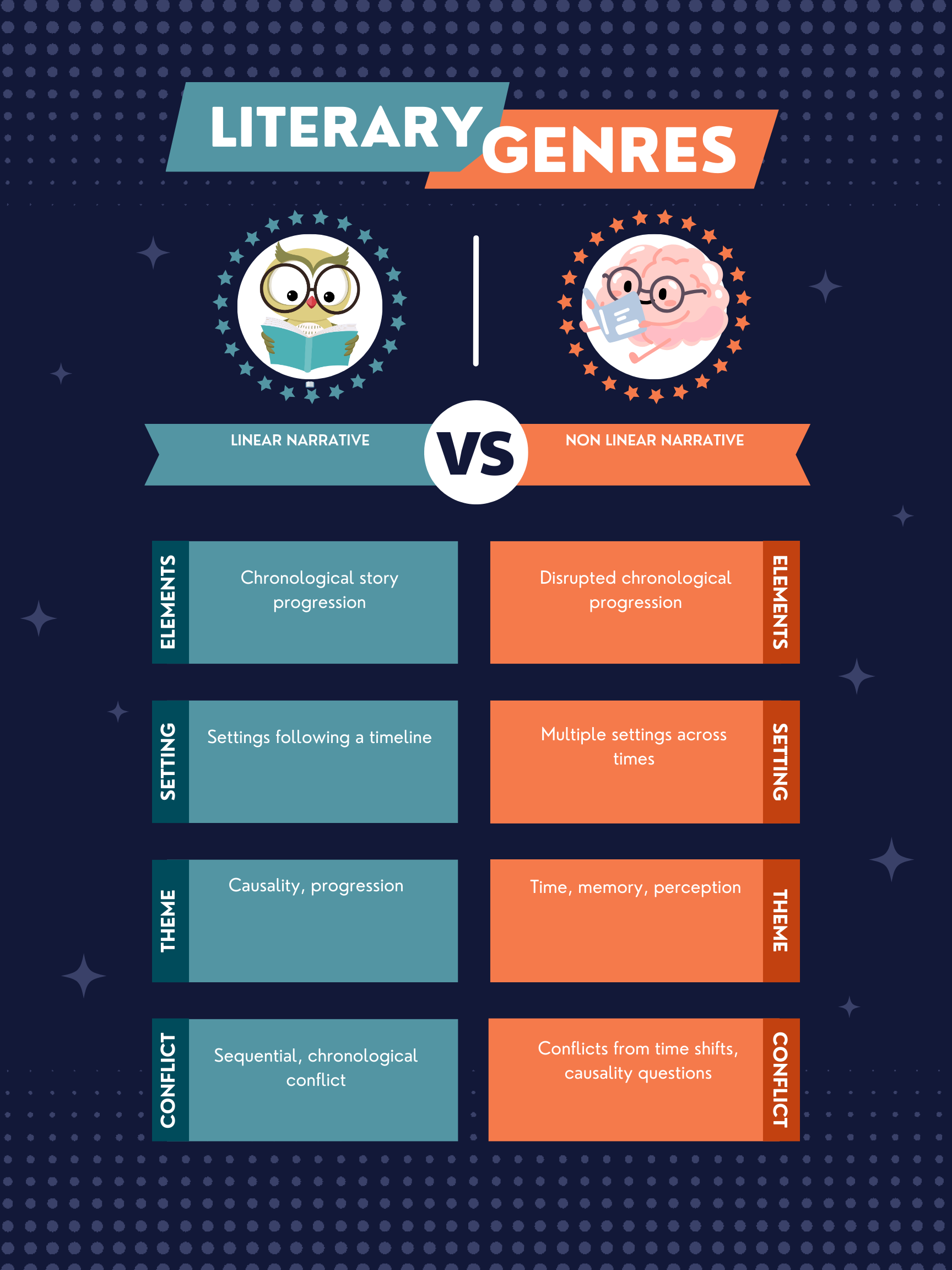Linear Narrative tells the story in chronological order; Non-Linear Narrative presents the story out of order, using flashbacks, flash-forwards, or other techniques.
In the world of storytelling, the structure can significantly affect how a story is perceived and understood. Let’s break down these two narrative approaches. 🕰️↔️📚
Linear Narrative
A linear narrative follows a straightforward path, moving from the beginning through the middle to the end in a sequential manner. This traditional form of storytelling is easy to follow and helps maintain clear cause-and-effect relationships. Harper Lee’s “To Kill a Mockingbird” is an example, narrating events in the order they happen, which builds a gradual understanding of the characters and their world.
Non-Linear Narrative
Non-linear narratives break away from chronological order, employing techniques like flashbacks, flash-forwards, and time loops to tell the story. This approach can add depth, mystery, or complexity, engaging the audience in piecing the story together. “Pulp Fiction” by Quentin Tarantino is a classic example, with its interwoven stories told out of sequence.
Summary
| Literary Device | Definition | Purpose | Usage | Relevant Examples |
|---|---|---|---|---|
| Linear Narrative | Tells the story in chronological order. | To maintain clear cause-and-effect relationships. | Novels, short stories, traditional cinema. | “To Kill a Mockingbird” by Harper Lee. |
| Non-Linear Narrative | Presents the story out of order. | To add depth, mystery, or complexity to the narrative. | Novels, films, modern storytelling. | “Pulp Fiction” by Quentin Tarantino. |
Writing Tips
For Linear Narrative:
- Focus on Flow: Ensure your story flows smoothly from one event to the next, building tension and character development along the way.
- Use Transitions: Clear transitions between scenes and chapters help maintain clarity and pace.
- Build to Climax: Carefully structure events to build towards a satisfying climax and resolution.
For Non-Linear Narrative:
- Keep Clarity: Despite the non-chronological order, ensure the story remains understandable to your audience.
- Highlight Connections: Use non-linear techniques to reveal connections and themes that might not be apparent in a linear structure.
- Be Creative with Structure: Experiment with different ways to organize your narrative to enhance the story you’re telling.
FAQs
Can a story mix linear and non-linear elements?
Yes, many stories blend both approaches to take advantage of the clarity of linear storytelling and the depth of non-linear narratives.
How do I choose between a linear and non-linear narrative?
Consider your story’s themes, the complexity of the plot, and how you want to engage your audience. Non-linear narratives can offer intriguing ways to explore your story, while linear narratives provide a straightforward, cohesive flow.
Exercise
Read the following excerpt: “She stared at the old photograph in her hand, taken years ago. Suddenly, she was back there, reliving that summer day.”
Answer: This passage introduces a flashback, a non-linear narrative technique, indicating a departure from chronological storytelling.
Other Interesting Literary Device Comparisons
- First-Person vs Third-Person Perspective: The choice between narrating a story from a character’s point of view or an outside perspective.
- Show vs Tell: The difference between showing actions and emotions through descriptive language versus simply telling the audience about them.
- Static vs Dynamic Characters: Comparing characters who remain unchanged throughout the story to those who undergo significant development.
Exploring the nuances between linear and non-linear narratives offers writers a palette of techniques to craft engaging, memorable stories. 🖊️📖

